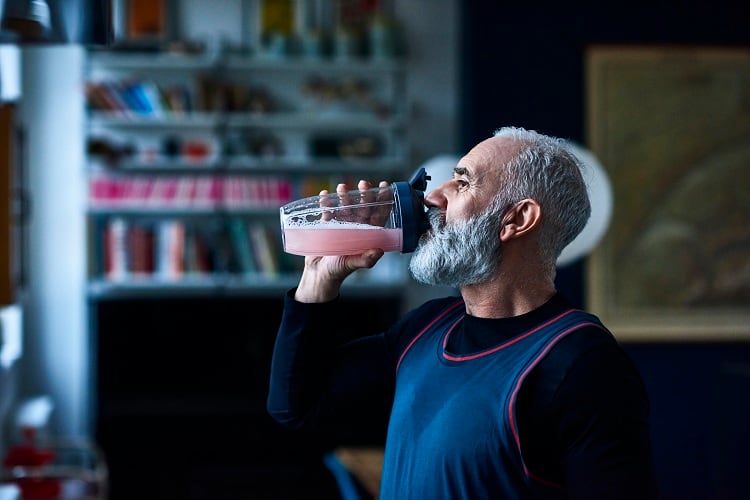The number and proportion of older people in the global population is on an upwards trajectory. According to the World Health Organization (WHO), by 2050 22% of the world population will be aged 60 and older. An estimated 426m of those will be aged 80 and over.
With increasing evidence suggesting lifestyle factors can improve or hinder the impacts of ageing, consumers are keen to influence how they age – for the better.
As the healthy ageing trend grows, so too does the opportunity for food and beverage makers to respond to these demands. How can industry best tap into the trend?
What is ‘healthy longevity’?
Although the terms ‘healthy ageing’ and ‘healthy longevity’ are often used interchangeably, the former tends to encompass both societal and health-related factors. The latter, on the other hand, is largely used to describe extending good health into older age.
The healthy ageing topic is nothing new. There has long been demand in the nutraceutical and dietary supplement space, which has started spilling over into food.
Importantly, ‘healthy longevity’ is not just about living longer. It’s about living healthier for longer. This means avoiding, or delaying, well-known age-related deterioration. Age-related diseases and conditions include cancer, diabetes, cardiovascular disorders, neurodegenerative diseases and arthritis.
This is where closing the ‘age gap’ can come into play, according to Dr Tatiana Sergeenko, principal consultant at R&D consultancy Sagentia Innovation. “Although chronological age does reflect disease risk, the rate of ageing varies across individuals, organs, tissues, and clinical conditions. Chronological age does not capture this variation well.
“On the other hand, when a person’s biological age far exceeds their chronological age, it may indicate more susceptibility to age-related health conditions. A lot of healthy longevity solutions look at closing this ‘age gap’ to maintain good health in older age.”
The longevity concept has more recently come the fore, benefiting from high-profile devotees such as US tech entrepreneur Bryan Johnson. The multi-millionaire spends a reported $2m (€1.86m) annually on his anti-ageing programme, claiming to have significantly reversed his biological age.
Healthy longevity: The food and drink potential
Food and drink products championing healthy longevity are few and far between.
Of course, some innovations in food and drink already exist. UK-headquartered Uda (short for UndoAge) sells ‘Science-based Longevity Coffee’ containing functional ingredients such as Ashwagandha, Quercetin, L-theanine, and Curcumin.
According to the company, curcumin helps reduce cellular damage, and enhances the immune system functions that decline with age.

But a real opportunity still exists to innovate around functional products which address the specific nutritional needs of older people, believes Dr Sergeenko.
“It’s about pinpointing nutritional interventions which may benefit physical, mental, and emotional health in older age, then developing tailored product formulations.”
Food supplements are one obvious route, but not the only one. “There is also scope for the development of functional drinks and snacks,” we were told. “Powdered products hold great potential due to their stability and shelf life.”
Challenges and opportunities in targeting healthy ageing
A potential challenge – and opportunity – lies in how products promoting healthy longevity are positioned. In any case, this needs to be an important consideration, according to the Sagentia Innovation consultant.
This might involve making nutritionally rich and fortified foods more desirable, for example. Or else promoting products’ benefits for older people. “For instance, phospholipids and specific vitamins and minerals are required for older people to maintain muscle mass and bones as well as contributing to normal brain function.”
Heath claims can prove a challenge, however. Any health-related claim will face a ‘high level of scrutiny’. “Companies must look at ways to substantiate claims linked to healthy longevity for older people,” said Dr Sergeenko.
“This includes analysis of data linking certain ingredients or supplements and positive healthy impacts.”
Longevity sparks potential for industry collaboration
Given that people age differently, and in highly complex ways, there is scope for personalised approaches to healthy longevity. In fact, much of the emerging healthy longevity market is based on this principle.
Commercial activity in health longevity largely fits into three categories:
- Diagnostics (wearable devices; test kits; apps for measuring, tracking, and quantifying biomarkers for biological age assessment/prediction);
- Formulated treatment solutions (functional supplements, nutritional interventions); and
- Support and recommendations for self-care (dietary and lifestyle guidance).
Examples include start-ups AgeMeter (which calculates ‘functional age’ by testing physiological and cognitive biomarkers that decline with age), and GlycanAge (which tests biological age via finger prick blood sample), amongst others.
But ‘holistic healthy longevity’ solutions also present an opportunity for industry. These might involve a nutrition-led service made up of postal test kits followed up with personalised supplement formulations or dietary and lifestyle recommendations, according to the consultancy.

Looking to the future, Sagentia Innovation expects healthy longevity to be a ‘fertile territory’ for partnerships between digital services and food and beverage companies.
“New technological developments for non-invasive, at-home diagnosis of vitamin and mineral deficiencies – for instance through the analysis of sweat – hold great promise for precision nutrition for older people.”




